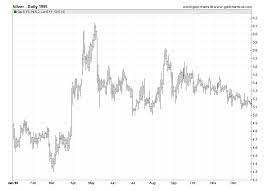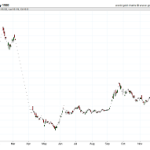The study of past market trends is crucial for understanding the behavior of modern financial markets. Silver, a precious metal with a long-standing history of industrial and investment applications, has been a valuable commodity for centuries.
The fluctuations in silver prices in 1995 provide a snapshot of the precious metals market during that period. By analyzing the data on daily prices and LBMA silver price fix history, we can gain insights into the factors that influenced price movements and their potential implications for the current silver market.
While some argue that historical data may not be relevant to modern markets, there is a growing consensus that understanding past market trends can help investors make more informed decisions.
For silver, the market movements in 1995 were influenced by a variety of factors, including geopolitical tensions, global economic conditions, and changes in supply and demand. This article aims to provide an objective analysis of the historical fluctuations in silver prices in 1995, highlighting the key factors that impacted prices and offering insights into how this information can be used to inform investment strategies in the current market.
Historical Price Data
The available daily price data of silver in US dollars per troy ounce from January to July 1995, alongside LBMA silver price fix history data, provides a snapshot of the fluctuating prices of silver during that period, with the highest price in April ($5.92) and the lowest in July ($5.07).
It is important to note that the data only covers a six-month period, and there is no information on silver prices before or after 1995. Additionally, there is no information on the factors influencing price fluctuations during this period, and no information on the global demand and mining production of silver.
Despite these limitations, the historical price data of silver in 1995 can provide insights into the silver market during that period. It is worth noting that the prices fluctuated throughout the period, with prices generally stable in September and October.
The lack of information on global demand and mining production, however, limits the interpretation and use of this data for understanding the broader trends in the silver market.
Factors Influencing Prices
Various economic and geopolitical factors have been known to influence the fluctuations in the price of silver in the past.
One of the most important factors is global demand. As silver is used in a variety of industries, including electronics, jewelry, and solar panels, changes in demand can have a significant impact on prices. For example, a decrease in demand from the electronics industry due to advancements in technology can lead to a decrease in silver prices.
Another factor that can influence silver prices is economic conditions. When the economy is strong, there is often an increase in demand for silver as it is viewed as a safe investment. On the other hand, during times of economic uncertainty, investors may turn to other assets, such as gold, causing a decrease in demand for silver.
Additionally, changes in interest rates can also impact silver prices as higher interest rates can make other investments more attractive, leading to a decrease in demand for silver.
Comparison to Current Prices
One significant approach to examining the price of silver is by comparing it to other precious metals in the market.
As of August 2021, the current price of silver is $23.10 per troy ounce. This is a significant increase from its price in 1995, where it ranged from $4.62 to $5.92 per troy ounce.
However, compared to other precious metals, such as gold and platinum, silver’s current price is relatively low. As of August 2021, gold is priced at $1,809.30 per troy ounce, while platinum is priced at $1,031.00 per troy ounce.
Current trends suggest that the price of silver is likely to continue to fluctuate. The demand for silver in various industries, such as electronics and solar panels, may increase in the future, leading to a rise in its price.
However, the current global economic climate and the ongoing COVID-19 pandemic may also impact the price of silver. Future projections for silver prices remain uncertain, and investors should carefully consider market trends and economic factors before making any investment decisions.
Interpreting and Using Data
Interpreting and using historical price data requires an understanding of the various factors that influence price fluctuations and how the data can be analyzed to inform investment decisions. Silver prices, like any other commodity, are subject to market trends, supply and demand dynamics, and geopolitical events that can impact prices. Understanding these factors is crucial in interpreting past price data and predicting future trends.
One way to interpret historical silver price data is by analyzing patterns and trends over a specific period. For instance, by examining the data for 1995, we can see that prices fluctuated throughout the six-month period, with the highest prices recorded in August and the lowest in December.
Additionally, prices were generally stable in September and October, indicating a possible stabilization of the market during this period. By understanding how prices changed during this period and the factors that influenced these changes, investors can make informed decisions about the future direction of silver prices.
Frequently Asked Questions
What were the main drivers behind the fluctuations in silver prices during 1995?
As silver prices fluctuated in 1995, factors affecting its price included economic policies and market speculation. However, without additional information, it is difficult to determine the specific drivers behind these fluctuations. Remember, "correlation does not imply causation."
How do the 1995 silver prices compare to silver prices in other years?
Comparing trends between 1995 and other years, silver prices have fluctuated significantly. Investment strategies should consider historical data, such as silver’s peak in 1980 and recent highs in 2011, to forecast future price movements.
What was the global demand and supply for silver during the period of 1995?
The global demand and supply chain dynamics for silver during 1995 remain unknown as the provided data only covers the fluctuating prices from January to December. Further research is needed to determine the factors influencing the silver market during this period.
Were there any significant events or news in the silver industry that affected the prices during 1995?
There is no information available on impactful news or influential stakeholders that may have affected silver prices during 1995. The data only covers a six-month period and does not provide insight into global market trends or industry news/events.
How can investors use the historical price data from 1995 to inform their investment decisions in the current silver market?
Applying insights from historical data, investors can forecast trends in the current silver market. However, caution should be exercised as the factors influencing silver prices in 1995 may not be relevant today. It is important to consider current market conditions and global events.





